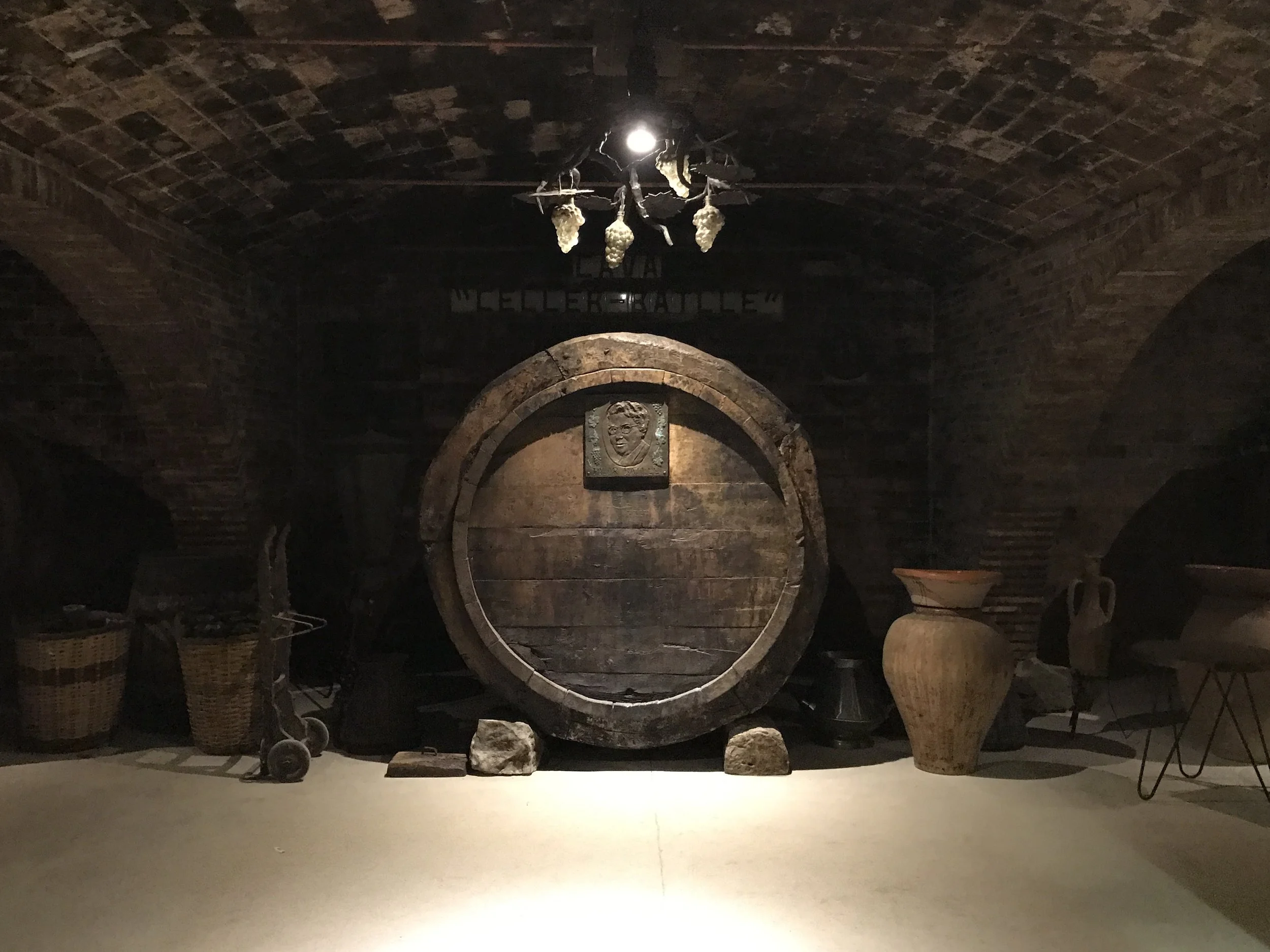A Trip to the Heart of Priorat and Penedes
We recently spent twelve days in Barcelona and the Priorat and Penedes wine regions south of Barcelona. I was enchanted anew by Barcelona, still beguiling with its mix of architecture, art and design interspersed with ancient bars, shops and eateries. I rediscovered why I love the two premier Catalan wine regions: the wines, the landscapes, the villages, the wineries and the buen trato (warm and welcoming treatment) of the people.
Barcelona
The city looked and felt like pre-Covid Barcelona, and even more like it was before mass tourism arrived. The restaurants, hotels and wine bars were back in action but not full. The secret old-school bodegas, vermouth bars and traditional tapas bars were alive and well, but not full either. There were no lines at Gaudi’s buildings or other Modernist sites! No waiting at the Picasso Museum! Back in the before days, in 2016-2019, nearly every one of the places we visited, from bars and restaurants to Modernist buildings and museums, had lines streaming out the doors. It’s impossible to know how long Barcelona will stay this way, but it feels like 2010. Despite the lost earnings from the drop in visitors, many locals expressed their hope that the city could find a balance that could keep it livable for locals and attractive for visitors. If only for a moment, today it feels like that balance has been recovered.
Without the dizzying crowds it was easy to remember what makes Barcelona so attractive. Its undeniable modern cool factor has always been there, but the traditional bars, watering holes and eating counters which feel even more anachronistic given their 21st-century Barcelona surroundings, make this diverse city what it is. We’ll be writing up some recommendations in a future post, including market bars, farm-to-table restaurants, and spots for a drink that seem unchanged in a century.
The Penedes
Penedes is a land of rolling hills and the source of Spain’s most famous sparkling wine: Cava. Cava has gotten a reputation as cheap bubbles around the world, but that’s not all there is to the wine here. Quality producers using the Cava brand or new invention Corpinnat are making world-class sparkling wines that age for years before release. Organic and biodynamic viticulture using indigenous grapes is bringing the vineyard back into focus in a region long run by big bottlers. Many producers are even showcasing the local Xarello grape in fine varietal white wines. There is very good cuisine in the Penedes, combining ingredients from the hills and the sea. The winery experiences are first-rate with jeep tours of the vineyards, hilltop wine tastings, long-aged sparkling wines to taste, sparkling-wine pairing meals and more.
Many travelers visit a winery or two in the Penedes as a day trip from Barcelona. While it is close enough to Barcelona to do just that, there is much more to the region. I recommend spending two days in the Penedes, or a day and a half followed by a few days of wine tours in the Priorat.
Penedes Sparkling Wines
Many wineries that we choose to visit belong to Corpinnat, which is a group of wineries that left the DO Cava to form their own association. The breakaway wineries are all committed to organic viticulture, hand harvesting of grapes and long aging of their sparkling wines–a minimum of 18 months aging is required and many of the wines are aged for 30, 60 or more months. They use primarily local grape varieties and their wines are made on each winery’s premises. Corpinat is standing firm on the side of high quality aged sparkling wines. Tasting their wines will convince you they’re on to something good.
The Priorat
The Priorat is a world of impossibly steep slopes and the source of some of Spain’s finest wines, making it an ideal wine region to visit. Winding roads lead to tiny villages on hilltops overlooking small plots of mainly Garnacha and Cariñena vines. It’s a hard place to make wine, but the results of the effort of the winemakers who battle the slopes and climate in the Priorat are extraordinary. The region’s reputation was built on big, powerful reds that garnered top scores from critics, but today that style coexists with mineral, elegant wines that seek to express the land as purely as possible. It’s worth spending three days in the Priorat to explore the different villages and their terroirs, hear the stories of passionate winemakers, and taste your way through the incredible diversity of wines available. The Priorat is more fascinating than it has ever been.
Priorat Wines
The wines in the Priorat have undergone some dramatic changes lately. Many wineries and winemakers have moved away from the powerful red wines the region became known for in the 1990s and early 2000s. These wines were blends of Grenache, sometimes Carignan, and international varietals Cabernet Sauvignon, Syrah and Merlot. Some of the pioneers of this style prized extraction and power and their wines cemented an idea of the Priorat in people’s minds that rarely applies any more.
The new wave of top Priorats has changed the vision of what the region can do. Though alcohol levels still often exceed fifteen percent, there’s more purity and elegance. Garnacha and Cariñena have come to be seen as the grapes of the region, with the international grapes removed from many top wines. New oak and high extraction have given way to large format barrels, amphorae, and a certain lightness in the glass. The reigning influence in the Priorat is no longer the “modern” style of the 1990s but rather the subtle and aromatic wines of Burgundy and terroir-focused winemakers in other parts of Spain. The new Priorat coexists with the old, but it has also changed the mainstream, in my opinion for the better. Even if you think you know Priorat, you’ll be surprised by the wines you taste there..

